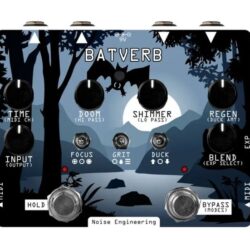
Noise Engineering Batverb Review
When California-based effects company Noise Engineering released their Desmodus Versio in 2020, it represented the first reverb effect in their product line, but they coined a new term for the DSP-based effect: a synthetic-tail generator. The name reflects the reality that it is, by definition, the Desmodus Versio doesn’t create literal reverberation, as in reflections in a room, but instead builds “tails” onto an audio signal. Taxonomy aside, it was a powerful, well-received, and positively jam-packed digital unit.The Batverb, launched earlier this year, is an evolution of Noise’s tail-generating efforts. However, it uses brand-new code programmed for Electrosmith’s Daisy Seed DSP platform. A stereo effect box that spans delightful and demented flavors of delay and reverb, the Batverb is generously featured and full of unique takes on space-making effects. Heads or TailsThe Batverb’s main panel includes six knobs, three 3-way switches, two footswitches, and one “bat” button, which you press and hold to access alternate parameters assigned to the knobs. On the crown are input jacks for either mono or stereo performance as well as MIDI in/out and expression pedal jacks. Up to 16 different presets can be saved and recalled via MIDI.In normal operation, the knobs govern, from bottom left to bottom right, input volume, time, a suboctave chorus, an octave-up shimmer, “regen” or feedback, and a blend of dry and wet signals. When holding the bat button, those same knobs, in order, control output volume, MIDI channel selection, high-pass filter, low-pass filter, duck amount, and expression pedal parameter assignment. The focus switch changes the diffusion of the delay lines. In the left position it behaves more like a delay, while the other two settings sound and feel more like reverbs. Grit adds, in the middle and right positions, a discrete soft-clipping distortion, and duck determines the responsiveness of the feedback. In the switch’s center position, there’s no ducking. At left, feedback monetarily increases when input volume is received, then tapers off as the signal does. At right, the opposite happens, and feedback increases as the signal gets quieter. Enter the Bat CaveTo my ears, the Batverb’s more reverb-y patches are in hall or room territory—albeit very cavernous halls or rooms. But reverb sounds created by the Batverb’s algorithms sound more authentic to me than many sought-after reverbs I’ve played. Rather than an indistinct wash of sound, the tails here give the convincing impression of your amp’s signal ricocheting around a high-ceilinged cathedral, at first coming back in clearer, sharper bursts, then melting into smeary ambience. And the handy hold feature can be engaged for infinite regeneration by tapping the footswitch, or for a specific window by pressing and holding. That double utility goes a long way toward determining whether the Batverb sounds organic or unhinged.The sub- and up-octave content injected by the doom and shimmer knobs is more chaotic and spacious than garden-variety iterations of those effects you’ll find on many octave-based reverbs, and that’s a good thing. Like most effects generated by the Batverb it feels like the product of thoughtful, well-considered programming. The delay algorithm, engaged with the focus toggle at left, is pleasant and plenty usable, and it’s nice to have alongside the less predictable reverb settings. But the Batverb’s deep tweakability means you can still dial in a broad range of both standard and more marginal delay sounds. The chunky transistor-ish dirt summoned by the grit switch widens the palette further. Add in the touch-sensitive ducking (and its customizable parameters), and you’ve got a ton of ground to play with.The VerdictNoise Engineering created an outstanding reverb and tail generator here. Considering its steep asking price, the Batverb will be out of the question for many players, but it’s obviously geared to adventurous players and discerning producers, especially those looking for authentic, parallel universe-conjuring ambience and noise in their studio or live rigs. For these musicians, the Batverb will be more than worth the bite it takes from the bank balance.
Read more »Five For Friday: September 12, 2025
Find new worlds to explore with this week’s new releases, including the latest from Between the Buried and Me, Infernal Thorns and more!
The post Five For Friday: September 12, 2025 appeared first on Decibel Magazine.
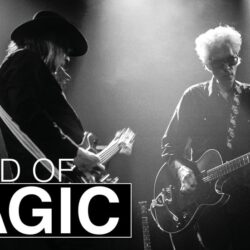
Filmmaker and Musician Jim Jarmusch on Guitars, Music, & Magic
Filmmaker Jim Jarmusch—one of the creative avatars of downtown New York cool since the mid ’80s—was asked a while back what he thought were some of the key innovations of the 20th century. “My answer was the mapping of the human genome, the Hubble Space Telescope, the French bikini, and the electric guitar,” recalls the director of such arthouse wonders as Mystery Train, Dead Man, and Only Lovers Left Alive. “My favorite of those might be the electric guitar. I just love guitars and musical noise.”YouTubeJarmusch isn’t just a fan of music ranging from the Stooges and Crazy Horse to heavy drone bands like Earth and Nadja. He generates guitar noise himself, most notably with his band Sqürl and his frequent duo partner, the Dutch lutenist Jozef van Wissem. Jarmusch has been making records and performing live with both for years now; his output with a guitar in hand has even lately outpaced his productivity behind a camera. Last year, he and his prime Sqürl mate, Carter Logan (drums/electronics), released Music for Man Ray, an album of their scores to Surrealist short films made by the titular artist in the 1920s, the whorls of sound captured live at the Centre Pompidou in Paris. That disc followed a 2023 Sqürl studio album, Silver Haze, with guest stars guitarist Marc Ribot, actress/vocalist Charlotte Gainsbourg, and the singer-songwriter Anika. Jarmusch and van Wissem toured this summer to herald a new record, The Day the Angels Cried, their fifth non-soundtrack release. Jarmusch has also been working on some longform solo guitar music, asking the recording engineer to “edit out all the riffs” as he follows a dream-logic muse.“You have to be listening and use your whole body along with your instrument, your amps, your effects. But what you’re going to produce isn’t certain, and there’s tension in that.”—Jim JarmuschAlthough he had played in bands during the early ’80s, mostly on keyboards, Jarmusch took up the guitar as a passion in the early 2000s. He had planned for his pensive noir The Limits of Control (2009) to feature preexisting music rather than a purpose-written score, including viscous art-metal by Boris, Sunn O))), and Earth, the tolling psychedelic rock of the Black Angels’ “You on the Run,” and a handful of flamenco pieces to suit the Spanish setting. But when he couldn’t find the right tracks to match some elemental sounds he heard in his head for a few remaining scenes, Jarmusch decided to make that music himself, alongside Logan and engineer-organist Shane Stoneback. Credited as Bad Rabbit on the soundtrack, the name morphed into Sqürl as Jarmusch and Logan released further recordings, such as the luminous, affecting Some Music for Robby Müller (a sonic tribute to the late, great cinematographer). “I’m not a trained guitar player—never even had a real lesson,” explains Jarmusch, 72. “I play my own way. I don’t practice scales, but something I have practiced for many years is controlled feedback. If I can say anything, it’s that I’ve become pretty good at that kind of musical feedback on electric guitar, something I do a lot in the duo with Jozef. I have had some pointers in this area, particularly from Stephen O’Malley from Sunn O))) and Stewart Hurwood, one of Lou Reed’s guitar techs. But the thing about feedback is that you’re not always totally in control of it. You don’t know exactly how the guitar and pickups are going to react vis-à-vis what distance you are from the amplifiers and how their levels are set. So, you have to be listening and use your whole body along with your instrument, your amps, your effects. But what you’re going to produce isn’t certain, and there’s tension in that. I’m always interested in the challenge of being a little off-balance—it inspires me. I’m not so good at repeating a formula, as I’m not mathematical in that way. When playing more rock ’n’ roll guitar with Sqürl, I can even sort of frustrate Carter at times, because he’s a precise drummer and my approach is on the loose side.Primal Sounds, Old WoodWhen it comes to his ethos of guitar, clues come from the two documentaries Jarmusch has made: the exciting, insightful Stooges history Gimme Danger (2016) and the lo-fi road document Year of the Horse, which Neil Young called “a nature film” of his 1996 tour with Crazy Horse. “I’m definitely not into shredding, even if you can admire the technical mastery of someone like Eddie Van Halen,” Jarmusch says. “I’m a Ron Asheton guy—in the more primal camp. I really like Neil’s raw style. I’m drawn to players who approach the instrument from an odd slant.” He points to Ribot, Link Wray, Robert Quine, and Rowland S. Howard of the Birthday Party as other individualists he finds inspiring, along with Earth’s Dylan Carlson for “his beautiful sound and incredible control” at glacial tempos, and Pat Place of the Contortions and Bush Tetras, “who brought such a funky vibe to the post-punk and No Wave scene in New York.”
Jarmusch lights up at memories of witnessing Television live, calling the interplay of Tom Verlaine and Richard Lloyd “a beautiful revelation—this weaving of guitars that wasn’t necessarily blues-based. Their shows would just elevate me to the sky.” He also digs the live-wire, sui generis guitar weave of Ibrahim Ag Alhabib and his mates in the nomadic Saharan band Tinariwen, as well as the drone-metal pairing of O’Malley and Greg Anderson in Sunn O))) and the intrepid avant-rock of Sonic Youth’s Thurston Moore and Lee Ranaldo.Jim Jarmusch’s GearGuitars Fender Stratocaster modified by Rick Kelly with Seymour Duncan Quarter Pound pickups, Callaham bridge, and leather pickguard by Cindy Guitars Rick Kelly T-styleGuild Starfire I Jet 90 with three P-90 pickupsFender Ed O’Brien StratocasterEpiphone Casino Epiphone ES-335Fender JaguarBlueridge DreadnoughtGibson L-1 Guild mahogany dreadnought 12-string acoustic Gretsch Bobtail Roundneck Resonator G92201960 Silvertone Jupiter AmplifiersVox AC15Fender Pro JuniorRoland Jazz ChorusSilvertone 1482Vox Pathfinder 15REffectsEarthQuakerDevices Dispatch MasterEarthQuakerDevices Avalanche RunEarthQuakerDevices TransmisserEarthQuakerDevices Astral DestinyEarthQuakerDevices HizumitasEarthQuakerDevices SpiresEarthQuakerDevices Special CrankerEarthQuakerDevices AqueductEarthQuakerDevices Rainbow MachineEarthQuakerDevices WardenEarthQuakerDevices Acapulco GoldDeath by Audio Echo MasterGamechanger Audio Plus SustainGamechanger Audio PlasmaElectro-Harmonix Deluxe Memory Man (vintage)Electro-Harmonix PitchforkElectro-Harmonix 720 LooperElectro-Harmonix Voodoo Lab OverdriveBoss Super Overdrive SD-1Boss Compression Sustainer CS-3Boss Loop Station RC-3Boss Space Echo RE-20Boss Catalinbread EchorecMXR Carbon CopyChase Bliss MoodChase Bliss Generation LossKernom Moho FuzzDunlop TS-1 Stereo TremoloTrueTone CS12Death By Audio Raw PowerStringsD’Addario .010sLike some of his favorite players, Jarmusch’s go-to shop is Carmine Street Guitars in New York’s West Village, whose customers have also included Quine, Ribot, Lou Reed, Bill Frisell, Nels Cline, and Lenny Kaye. The proprietor, Rick Kelly, is a luthier whose specialty is creating guitars made out of rare, especially resonant 19th-century wood sourced from New York City buildings, including McSorley’s Ale House (established in 1854) and the roof of Jarmusch’s Bowery loft. He calls Kelly “my main guy—a real artisan and just fascinating to talk with about guitars, tonewoods, everything.” Kelly built Jarmusch a custom T-style (with a wide-range humbucker at the neck), along with modifying his longtime road guitar for Sqürl: a black Stratocaster, with Seymour Duncan Quarter Pound pickups and other touches. Jarmusch appreciates the store’s old-school, workshop vibe so much that he encouraged a documentarian friend of his, Ron Mann, to make a charmer of a film called Carmine Street Guitars, which features Jarmusch and many of the aforementioned players stopping in to talk about the shop’s instruments and try them out.“Making a film is a complex process with a lot of equal talents all pulling together, yet I’m necessarily the captain of the ship, navigating an idea from my imagination onto the screen. But when I’m making music with other people, I’m in a conversation.”Jarmusch’s other favored guitars include a Blueridge dreadnought and an Ed O’Brien signature model Stratocaster. “The Ed O’Brien Strat with that Fernandes Sustainer unit is an amazing guitar, kind of trippy,” he says. “Whenever I pull that thing out in my little studio, the instrument almost starts playing itself, like it just wants you to experiment with it.” For the squalling counterpoint he provides to van Wissem’s circular arpeggios, Jarmusch switches to a semi-hollow guitar. “I have a cool 335-style Epiphone from the 1990s that feeds back beautifully, sounding like a cello. I played it for almost all the past recordings where I used feedback a lot. But for my latest tour with Jozef, I have been using a Guild Starfire Jet that has three P-90 pickups. It’s kind of a beast, but I’m loving it, because it’s very good for controlled feedback.” Analog Spirit, Drone PowerAbout Jarmusch’s romance with guitars, van Wissem says, “I guess it was sort of an accident that the guitar and music became a bigger and bigger focus for Jim, but I always had the idea that he really wanted to be a musician, in a way. He has definitely become a good guitarist now, having developed his own sound and approach over the years. He loves his pedals and playing wild electric stuff and feedback, but he likes playing acoustic, too. We can go from darkly beautiful, even elegant things to some pretty metal sounds, especially at the climax of these recent shows when I trade the amplified lute for a 12-string guitar, my Gretsch Electromatic.”
Jarmusch and van Wissem hit it off after meeting on the street in SoHo about 20 years ago. “We immediately discovered that we shared an enthusiasm for many of the same films and books, and music from Morton Feldman to Joy Division,” van Wissem recalls. “Jim is a cultural sponge—he takes everything in.” The two developed a synergistic association, performing around New York with their unique combination of instruments and making records often colored by van Wissem’s arcane, neo-gothic mythos. The lutenist, playing models made for him by Canadian luthier Michael Schreiner after Renaissance and Baroque examples, had already been recording his own minimalist, contemplative compositions solo, having eschewed a traditional route of playing the complex classical repertoire (despite a love for such Baroque lutenist-composers as Sylvius Leopold Weiss). The aim, van Wissem says, was to “dust off” the lute by putting its intimate tones in a new context, “to make it live in the now.” It was a path more in keeping with his punk-rock spirit, something the indie-minded Jarmusch could appreciate.About Jarmusch’s romance with guitars, van Wissem says, “I guess it was sort of an accident that the guitar and music became a bigger and bigger focus for Jim, but I always had the idea that he really wanted to be a musician, in a way. He has definitely become a good guitarist now, having developed his own sound and approach over the years. He loves his pedals and playing wild electric stuff and feedback, but he likes playing acoustic, too. We can go from darkly beautiful, even elegant things to some pretty metal sounds, especially at the climax of these recent shows when I trade the amplified lute for a 12-string guitar, my Gretsch Electromatic.”“David Lynch said that movies are the closest thing that humans make to dreams, and it’s true. A film is like a dream that you’re pulled into. But music is more like a kind of magic, even just listening to it. You supply your own imagination, your own feelings and associations.”Jarmusch and van Wissem hit it off after meeting on the street in SoHo about 20 years ago. “We immediately discovered that we shared an enthusiasm for many of the same films and books, and music from Morton Feldman to Joy Division,” van Wissem recalls. “Jim is a cultural sponge—he takes everything in.” The two developed a synergistic association, performing around New York with their unique combination of instruments and making records often colored by van Wissem’s arcane, neo-gothic mythos. The lutenist, playing models made for him by Canadian luthier Michael Schreiner after Renaissance and Baroque examples, had already been recording his own minimalist, contemplative compositions solo, having eschewed a traditional route of playing the complex classical repertoire (despite a love for such Baroque lutenist-composers as Sylvius Leopold Weiss). The aim, van Wissem says, was to “dust off” the lute by putting its intimate tones in a new context, “to make it live in the now.” It was a path more in keeping with his punk-rock spirit, something the indie-minded Jarmusch could appreciate.A milestone for the Jarmusch/van Wissem partnership came with the soundtrack for Only Lovers Left Alive (2013), the director’s most potent latter-day film. Although ostensibly a vampire movie, on a deeper level it’s about valuing the gifts of the past while also appreciating new possibilities ahead, despite the melancholy evanescence of this world. The score is a mosaic of Sqürl and van Wissem, with the lutenist composing the main themes—which earned him the soundtrack award at the Cannes Film Festival. It’s also the duo’s “hit,” the one crowds cheer from the first notes.
Reflecting on his various collaborations, Jarmusch says: “Making a film is a complex process with a lot of equal talents all pulling together, yet I’m necessarily the captain of the ship, navigating an idea from my imagination onto the screen. But when I’m making music with other people, I’m in a conversation. With Sqürl, I can lead things, or not. But in the duo with Jozef, he generally makes the decisions on structure, etc., which I’m then free to react to. I like that. Giving up control is good for me, and he has experience making his own records. He has always encouraged my musicality, and I trust him. Our interest in history and our sense of aesthetics align in many ways, even if our philosophies differ in some areas. I see Jozef as this Swedenborgian mystic in a way, whereas I’m a natural-phenomenological psychedelic atheist, I guess.”Jarmusch and Van Wissem certainly share an appreciation for the timeless power of the drone. The pick of their albums, American Landscapes, comprises three droning tone poems created in 2022 to reflect the embattled state of the nation, like an alarm-cum-lament, with the lute tolling as the guitar growls at the moon. But all of the duo’s music-making taps into a hypnotic essence. “I’ll be playing one chord, arpeggiated, for a long time, circling around, and that repetition can put a listener into something like a trance,” Van Wissem explains. “On the lute, I’m playing Renaissance drones, essentially, alternating the bass line on two strings and improvising a melody on top, the drone staying the same with some variation in the melody. It’s basic, but that trance effect at a show means you go more inward. You let things go in the process, your daily disturbances, and when it’s over, you’re different somehow. I have the same experience when I go to a Sunn O))) concert.”Due out this fall is Jarmusch’s first movie since 2019, Father, Mother, Sister, Brother, starring Charlotte Rampling, Cate Blanchett, Adam Driver, and Tom Waits. Jarmusch tells a story involving Waits that helps illustrate a difference for him between directing movies and making music: “Once, I was with Tom at his house, and he’s sitting at this old piano and writes a song as I’m sitting there. It just comes and then goes into the ether, like perfume. At the time, I had been working on a film for two fucking years, with longer to go, and he conjured up this wonderful piece of art in the moment. Making films doesn’t have that immediacy. David Lynch said that movies are the closest thing that humans make to dreams, and it’s true. A film is like a dream that you’re pulled into. But music is more like a kind of magic, even just listening to it. You supply your own imagination, your own feelings and associations. Filmmaking is something that I love to do and hope to keep doing. But music is in another realm. I think it’s the most beautiful thing that humans do.”YouTube ItHere’s a flashback to Jarmusch and van Wissem earlier in their union, creating droning magic in Barcelona in 2013.
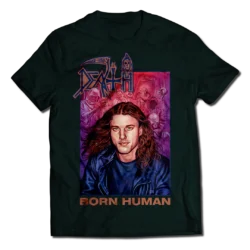
OFFER ENDS SOON! ‘Born Human: The Life and Music of Death’s Chuck Schuldiner’ Death-luxe Edition ALMOST GONE!
There are only 160 copies left of our special edition version of Born Human, the biography of death metal pioneer Chuck Schuldiner! Get it with the T-exclusive shirt now!
The post OFFER ENDS SOON! ‘Born Human: The Life and Music of Death’s Chuck Schuldiner’ Death-luxe Edition ALMOST GONE! appeared first on Decibel Magazine.
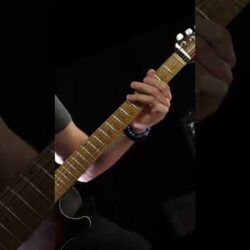
Drop D tuning: depth, density and destruction! #dropdtuning #dropdtuning #soundgarden #kingsx
Drop D is fantastic for rock, metal and alternative riffs. For the full tutorial visit https://www.guitarworld.com/lessons/techniques/drop-d-tuning #dropdtuning #dropdtuning #soundgarden #kingsx
Read more »
Yungblud bassist Silke Blansjaar lifts the veil on her tour-worn Gibson Grabber
Dutch-born, UK-based multi-instrumentalist Silke Blansjaar started off her music journey as a drummer, before she embraced the bass and landed a gig with Yungblud, one of the UK’s brightest young…
Read more »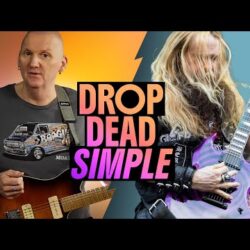
Drop D Tuning Made Easy: Everything You Need to Know
For tabs: https://www.guitarworld.com/lessons/techniques/drop-d-tuning Drop D tuning is not just the most popular altered tuning for guitarists, it’s also the easiest to setup. Get the lowdown on this essential tuning with…
Read more »Album Premiere: Matt Miller – ‘Fiber Tormentum’
Tech death maestro Matt Miller is dropping his latest album, Fiber Tormentum, via Exitus Stratagem Records on September 12. Here is a day early here!
The post Album Premiere: Matt Miller – ‘Fiber Tormentum’ appeared first on Decibel Magazine.
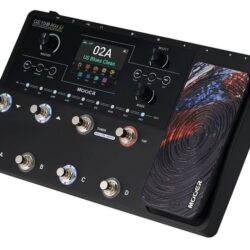
MOOER Expands Its Multi-Effects Range with the GE150 Max and GE150 Plus
Since its initial release in 2019, MOOER’s critically acclaimed GE150 has seen several significant improvements, including through the GE150 Pro and the more recently announced GE150 Plus. However, the latest addition to the series, the GE150 Max, includes some of the most impactful additions to the series so far, all while staying true to the device’s existing functionality. For existing GE150 users, the first thing they will notice is that, rather than having just two multi-functioning footswitches as with the original, the GE150 Max includes 8. Four of these footswitches are dedicated to switching between the four presets of each bank, whereas a further two are used to switch between banks. This is in contrast to other MOOER multi-effects pedals, where pressing two preset switches would typically shift the banks, with the new system making bank changes more accessible during a performance.The remaining two footswitches are used to activate the tuner function, the 80-second looper system, and to determine the universal tap tempo. Despite these control mechanism changes, the GE150 Max has retained its predecessor’s range of preloaded tones and effects. 50 preset banks are provided, each with 4 presets, totalling 200 customizable slots.Many different models of delay, reverb, and modulation effects can be applied to these slots, but most importantly, the device comes with 55 preamp models, each of which is based on nonlinear modeling technology, helping to produce realistic emulations of classic amplifier tones. However, users are not limited to these tones, as the GE150 Max also supports MOOER’s MNRS amp sampling system, in addition to third-party IR files for cabinet emulations, allowing users to greatly expand the device’s tones through uploading their own. To visualize the tones and effects that are currently loaded, the device is fitted with a 3.5″ LCD color display, providing real-time visual feedback on the effect chain and each module’s parameters. To edit these, the “Select” and “Mode” dials can be used, enabling guitarists to quickly create their own effects chains and then save them. Interestingly, the effect chains also support MOOER’s new CTRL function, which enables users to map single effect modules to footswitches, facilitating more granular real-time control over the chain. As with the original GE150, the Max edition sports an integrated expression pedal that can be mapped to tone and effect parameters, as well as output volume, adding yet another control mechanism for live expression. Interestingly, though, the Max has been augmented by the new “SPILL-OVER” function. Essentially, this ensures that delay and reverb effect tails will fade out naturally when switching presets, making smoother and more natural transitions possible in a live setting.In terms of the internal drum machine and looper, MOOER has stuck to the successful formula of the original GE150. 80 seconds of looping time allow for creative improvisations and loop-based compositions, and a 40-style drum machine is also provided, complete with 10 metronomes. The previously mentioned “Tap” footswitch can be used to accurately determine the BPM of these features in real-time.Aside from the GE150 Max’s internal features, it also boasts an impressive upgrade on its audio output options. Most notably, in addition to the expected 1/4″ stereo outputs, it is also fitted with a stereo balanced XLR output. Guitarists can choose this output option to shield their output from signal degradation and distortion over long-distance cables, guaranteeing a cleaner, more stable, and generally more professional live output than was previously possible.As if this weren’t enough, an Aux In port is also provided for connecting to smartphones or external audio players, allowing guitarists to jam along to their favorite backing tracks or rehearse their band’s material. The device’s USB port can even be used for OTG recording into a mobile device, as well as for the management of presets, sample files, and firmware through a PC. Combining this versatile selection of audio routing options with the GE150 Max’s upgraded functionality, guitarists truly have everything they need for professional-grade live performance, all within a light-weight and compact package.Product Features8 multi-purpose footswitches3.5″ LCD color display200 preset slots across 50 banks of 4 presets55 preamp models, made possible through intelligent nonlinear sample technologyAmplifier and cabinet modules support MNRS sampling filesCabinet simulations support third-party IRsParameter-mappable expression pedalCTRL function, allowing footswitches to be mapped to toggle individual modules within an effect chain presetTap-tempo footswitch“Spill-over” functionality for smooth reverb and delay transitions during preset switchesBuilt-in 80-second stereo looperIntegrated drum machine with 40 drum patterns and 10 metronome modesMono ¼” inputs and outputsXLR balanced output, ideal for the prevention of signal degradation over long-distance live audio routingAux input port for external audio playbackUSB-C port for tone editing, recording, firmware updates, and mobile device connectivity (via OTG)The GE150 Max will be available from the official distributors and retailers worldwide on 10th September 2025.Following the success of the original GE150 pedal, MOOER is excited to introduce the new GE150 Plus, a new multi-effects and amp-modelling pedal. The device has been upgraded to offer guitarists advanced functionality, greater performance flexibility, and enhanced sonic quality through the new GE series design language and user interface.First and foremost, the GE150 Plus provides memory for up to 198 preset patches, giving users a comprehensive range of tonal possibilities for various musical styles. Presets can be crafted through effects such as reverb, modulation, and dynamic enhancements, and most importantly, 55 precise preamp models developed using MOOER’s intelligent nonlinear sample technology. This enables the pedal to accurately reproduce the unique tonal characteristics and dynamic response of classic amplifiers, further enhanced by the device’s amplifier and cabinet modules. Both amps and cabs allow for loading MOOER’s MNRS sampling files, while the cabinet simulations also support third-party impulse response (IR), further expanding the device’s flexibility.Another particularly impressive new feature of the GE150 Plus is the “spill-over” function, which enables delay and reverb effects to fade naturally when switching between presets–a feature that was missing from the original GE150. Ultimately, this ensures smooth, uninterrupted performance when making sonic changes during live performances.As with past editions of the GE150, the pedal includes a convenient and intuitively designed 80-second stereo looper. This can be used in combination with the GE150 Plus’ groove station, which includes 40 integrated drum patterns alongside 10 metronome modes. All of these features are controlled effortlessly through three multi-purpose footswitches, bringing all manner of creative purposes for both live looping and rhythmic practice. An expression pedal is also built into the device, giving guitarists further dynamic control over parameters in their effects chain.Compared to the original GE150, the GE150 Plus has USB connectivity that is significantly enhanced. Through USB-C, the pedal can be easily integrated with MOOER’s PC software for preset editing, as well as for data management, firmware updates, and mobile device audio recording through an OTG cable. An aux input port further expands practice possibilities by enabling external audio sources like smartphones, software, or other hardware to be used as a backing track.Following MOOER’s recent trend of producing fully portable products for musicians on the move, the GE150 Plus is available in two distinct editions, one of which is battery-powered. The standard model offers reliable mains-powered operation, while the GE150 Plus Li version also incorporates an integrated lithium battery, providing approximately 9 hours of continuous use. Additionally, the GE150 Plus Li comes with an exclusive black finish. Overall, the GE150 Plus continues MOOER’s commitment to delivering powerful, versatile, and travel-friendly solutions, making it an essential upgrade within the critically acclaimed GE series.Product FeaturesUp to 198 preset patches55 preamp models, made possible through intelligent nonlinear sample technologyAmplifier and cabinet modules support MNRS sampling filesCabinet simulations support third-party IRsThree multi-purpose footswitchesParameter-mappable expression pedal“Spill-over” functionality for smooth transitions between effect tailsBuilt-in 80-second stereo looperIntegrated drum machine with 40 drum patterns and 10 metronome modesUSB-C port for tone editing, recording, firmware updates, and mobile device connectivity (via OTG)Aux input port for external audio playbackCompact, lightweight, and travel-friendly designAvailable in standard (white) and lithium battery-powered Li version (black)
Read more »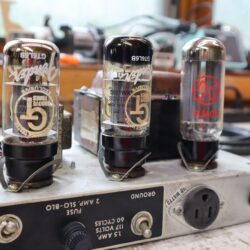
Oh, No! My Amp Is Making Noise!
If you’ve owned a tube amp for pretty much any amount of time, you’ve been there: Your amp starts making noise—probably at the worst possible moment, whether onstage, in the studio, at rehearsal, or when you just really want to play—and you don’t know what to do. Maybe you keep it cool, but maybe you panic: Is my amp broken for good? Is this going to cost me hundreds of dollars? Fortunately, there are a few basic things you can check before you call your amp tech in a frenzy. Ultimately, an all-tube guitar amp is actually a very durable device. But it’s important to remember that these amps need maintenance and have parts that are going to need to be replaced over the course of their lives—and tubes are the most likely place to check when you’re having a problem.Many vacuum tubes are “military grade,” which means they can withstand shock, vibration, humidity, temperature, and many other harsh conditions. That doesn’t mean they are fail-proof, though. So, when your amp is making noise, here are some ways to check out your tubes. LookDo a visual inspection. Are your amp’s tubes bright and shiny, or do they look weathered and dirty? If they look old, they may be old. This doesn’t have to be a sign of something wrong, but tubes wear out like lightbulbs—they work until they don’t. I usually say power tubes have a two- to five-year lifespan (for professionals, it’s more like six months to two years). Preamp tubes have more like a five- to 20-year life. They can function longer but start to get problematic before they just die.Look at what’s going on inside. Is the clear part of the glass still clear? If there is a smoky look on the inside of the glass, that is a sign of heavy wear. Look at the shiny mirror-looking part; that is the getter flashing. It should look bright, though sometimes there is a little fuzziness along the edges. If it is getting smoky, then the tube is tired. And if it has gone completely white, the tube is toast. The last visual is best done in darkness. Look for the heater element inside. It is a wire in the very center of the tube structure that glows red when operating. Don’t worry about what shape it is, how much you can see it, or if it looks exactly like the other tubes. If it is glowing, it’s good; if it is dark in there, it’s toast.ListenLet’s move on to audible diagnostics. The amp works but is making extraneous noises. The first thing to do is unplug the guitar cable from the input of the amp, so nothing is plugged in, the amp is fully on, and the tone controls, volume, and master (if applicable) are full on. What noises do you hear? If it is silent with a tiny little bit of background noise, that is as good as a guitar amp gets.
Are you hearing an electronic, almost morse-code sound? A common modern problem is RF (radio frequency) noise from routers, cell phones, and transmission towers. It is not the amp and there is nothing to fix, but if you try moving the amp around the room or building, you may find a quieter place.
Is the amp making a constant “shhhhh” sound? Does it get louder if you turn the volume knob up? That is thermionic emission, the noise of electrons flowing. It is a byproduct of gain. Low-gain amps have less, and high-gain amps suffer greatly. Some tubes can add to this, so if you replace the first couple tubes in the signal path and it helps drop the noise floor, then keep the noisy ones for less critical positions.
Is the amp sitting there doing the snap-crackle-and-pop thing? This can be a tube issue, but most of the time it is a component issue inside. If you have a known good tube, you can replace the tubes one at a time, seeing if the noise changes. If you find that it was a tube, that tube is toast, so don’t use it as a spare.
Now, let’s talk about microphonics. Because of the amount of gain we have in guitar amps, microphonic tubes can be problematic. Start turning the amp volume/gain all the way up. If you get a howl, like with an open microphone, you have a microphonic tube. If it is still behaving but you can tap on the amp and get a sound like tapping on a microphone, that can be acceptable. Finding the CauseThere are multiple tubes in an amp, so let’s find the root of the noise. The first thing is tap testing. The best tool is a pencil with an eraser. One by one, tap on the tubes with the amp on and turned up. If you get a significant microphonic sound from one, it should be swapped out with a quieter one. Now, this is the thing: A little bit of microphonics is normal, so it will take a little getting to know your amp to learn what is acceptable or not. Certain brands/models of tubes are better than others, so just because it’s new doesn’t mean it’s better or even good. As you go down the line of the signal chain, the gain is less, so you are looking for slight noises. Once you get to the power tubes, they can be microphonic, but they don’t howl like a preamp tube. They make a thud sound when tapped.The other thing we’re looking for with this tap testing is rattling. Again, there is a certain level of acceptable rattle. But if you can hear it through the speaker, that’s unacceptable. If you have power tubes that rattle, this sometimes does not come through the speaker, but you can hear it when playing the amp at lower levels. If that bothers you, then they need to be replaced even though they’re functioning properly.The last diagnostic is pulling the preamp tubes (not the power or rectifier tubes). Starting with the first tubes in the signal chain, pull them out one at a time and listen to see if the noise goes away. If you pull a tube and the noise disappears, then either that tube is the culprit, or your problem lies in that part of the circuit.If you’re looking for a quick fix to get you through your gig or session and you narrow your problem down to a tube, go ahead and swap it out. If your amp is fixed bias, you may still need to head to your tech tomorrow and have it biased, but you’ll get your work done today. And when in doubt, replace your old tubes. If it turns out that wasn’t the issue, you now have good spares for when a tube does eventually give you problems.
